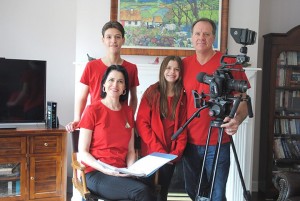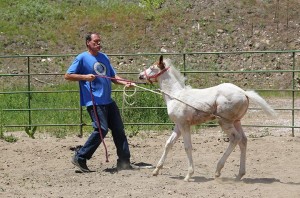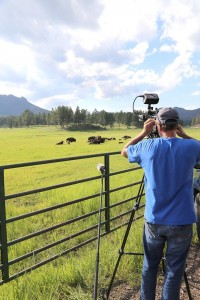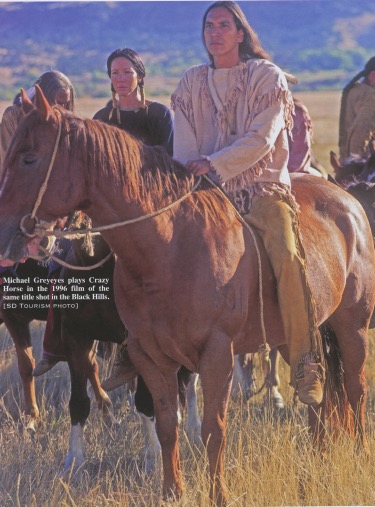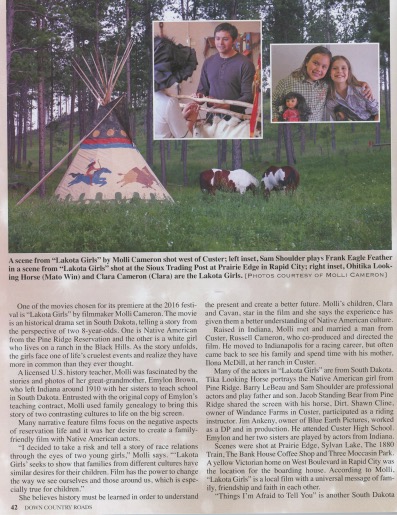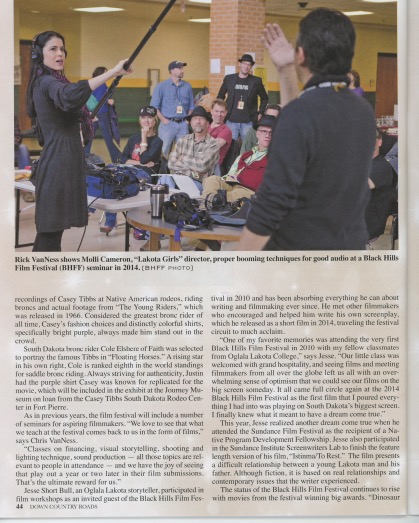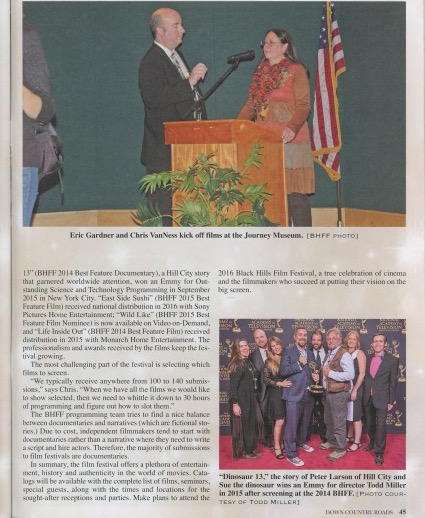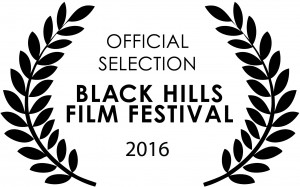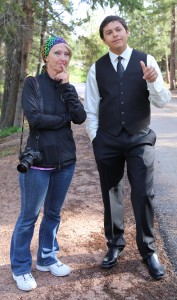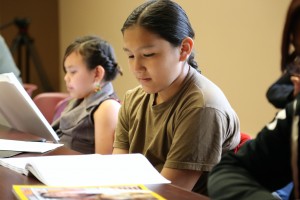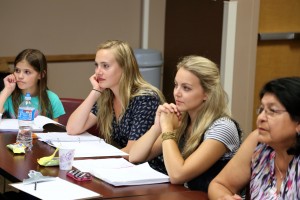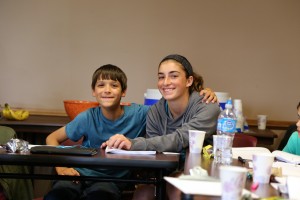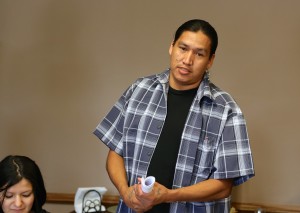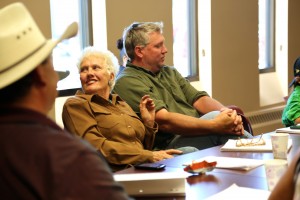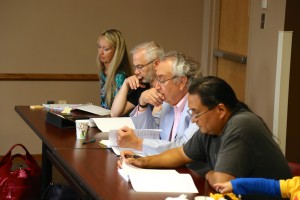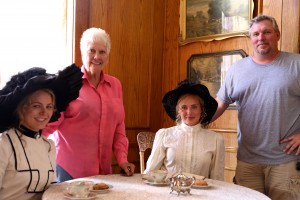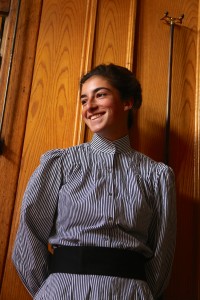Author: Mollianne Cameron
CUSTER FAMILY AWARDED “PEOPLES CHOICE” FOR “LAKOTA GIRLS” AT BLACK HILLS FILM FESTIVAL
CUSTER FAMILY AWARDED “PEOPLES CHOICE” FOR “LAKOTA GIRLS” AT BLACK HILLS FILM FESTIVAL
CUSTER FAMILY AWARDED “PEOPLES CHOICE” FOR “LAKOTA GIRLS” AT BLACK HILLS FILM FESTIVAL
May 8, 2016 · by Herb Ryan · in Hill City, The Arts. ·
The Black Hills Film Festival Awards, Hill City, South Dakota
Best Feature Film
Misfortune: Desmond Devenish, producer, Director, Writer, Star. Roger Stelien Producer, Scott Lautanen Producer, Locations provided film cars. Corey Trolley provided film cars
Best Short Film
Bird Dog: Katrina Whalen, Writer, Director. Producer, Jack Parlaute Producer, Charlie Koss, Carolyn Eperspecher.
Best Documentary – Feature
The Legend of Swee’ Pee: Benjamin May, Director. Anne Marie Lawless Writer, Karl Holland and Daniel Levin Producers.
Best Documentary – Short
Phil’s Camino: Jessica Lewis and Annie Oneil . Director, Annie Oneil Producer.
Peoples Choice
Lakota Girl’s: Molli Cameron Director, Russell Cameron, Producer
By Herb Ryan
Russell Cameron. producer, director of photography and actor, and Molli Cameron, director, writer, producer and costumes, were awarded the ” Peoples Choice” Award for the full length movie Lakota Girls Saturday evening at the Hill City Film Festival in Hill City, South Dakota.
Lakota Girls is a historical drama about Mato Win, an eight-year-old Native American girl who lives at Pine Ridge Indian Reservation in South Dakota. She is sent to live with a white family at a horse ranch in the Black Hills. She stays with Clara, an eight-year-old white girl and her family, but Mato Win is determined to get back to the reservation. She runs away to the mountainous forest, but is found. Mato Win is afraid she will be kept from her parents and does not trust Clara’s older brother Cavan. Mato Win questions Clara about an old photo of two Indian men in her home. Clara tells the story of her great-great grandma, Emylon, who rode the train from Indiana to teach there, a hundred years ago. The girls discover they have more in common than they knew. See Lakota Girls Movie Web Site
When I talked to Molli and Russell at the premiere of Lakota Girls Thursday at the Journey Museum in Rapid City, the film had not been shown yet. First time jitters and nervous energy were flowing around them and their children Cavan and Clara who both have parts in the movie. This was a new venture, Molli had written the story and Russell has a background in photography, but., there was zero experience in making a movie. Molli and Russel decided to commit and do what every was necessary to understand the film making process..Russell confessed that he had spent close to forty thousand dollars on camera equipment, he said. “That was a very expensive purchase, we also attended an accelerated film school in Chicago and the whole family was enrolled in an acting class as prep for the production. All our actors were paid, plus travel expense and production time, script adjustments and editing all add up”. Molli added: “There was all that on top of the fact, this was a family oriented movie, we wanted to take a chance and do something that relied more on the story line than the current cinema trend, something that is sensitive and informative and again suitable for a general audience, now we will wait and see how the audience will react to the movie”.
In a conversation with Avatar actor Stephen Lang at the Warrior’s Work Gallery in Hill City Saturday evening, we discussed the advances in movie technology. Stephen Lang said:” Yes, the technology really adds to the visual impact of a movie and I’m all for that, as actors, we all learn how to tell the story standing in front of a green screen which by the way can be difficult at times”. Lang continued: The green screens, 3-d modeling and other special effects are really not the soul of the movie, it needs a great story and actors that can perform their craft with conviction, that my friend is what makes a memorable movie, a movie that does not leave you feeling ,unfulfilled or hollow inside”. Lang’s submission to the Hill City Film Festival was “Beyond Glory” based on journalist Larry Smith’s best-selling war chronicle, Beyond Glory combines the art or theatre and cinema to tell the graphic conflicts of WWII, Korea and the Vietnam war. Screenplay by Stephen Lang, 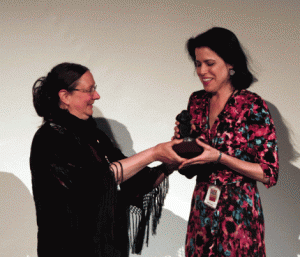
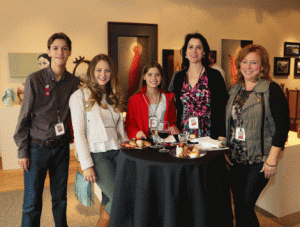
Current In Westfield Cover Story
Family film: The Cameron family travels to South Dakota to film ‘Lakota Girls’
By Anna Skinner
Molli Cameron always wanted to tell the story of her great grandmother, a woman who taught school in South Dakota and married a Native American man, something completely unheard of at the time.
Molli wrote the script, and, after taking her husband, Russell, to film school in Chicago, the couple, with their two kids, Caven, 12, and Clara, 10, traveled to South Dakota to film “Lakota Girls.” Both children attend Westfield schools.
“I wasn’t sure if I could sell the script or if anyone could make a movie and produce it, so we decided to produce and make the film ourselves,” Molli said.
Two-thirds of the story takes place in present day, revolving around a young, white girl and young, Native American girl, yet the middle portion of the story jumps into the past to tell the story of Molli’s great grandmother.
“Most films made with Native Americans are rated R. They focus on the violence, the poverty, the alcohol and the drugs, and so I wanted to make something that the Native American children and my children could watch,” Molli said. “I wanted a positive film that showed the two cultures connecting and getting along.”
Russell filmed, and Caven and Clara both acted and assisted with the filming. If one of the kids wasn’t acting, they were holding horses, watching the children of the actors or helping Russell film. Clara helped Molli with dialogue, as the main characters in the “Lakota Girls” are young girls. Both kids took acting classes, and Russell and Molli said they learned by observing.
Russell also acted occasionally but spent most of his time filming and editing the takes.
“One of the most difficult parts of the film-editing process is getting the audio correct,” he said. “It takes a lot more time than you think. One scene might be 30 or 40 takes.”
The Camerons began filming in June 2014 and finished in January 2015. The national screening for the U.S. premiere was May 5, in Rapid City, S.D. at the Black Hills Film Festival.
“We will have an Indiana premiere. I submitted the film to the Indy Film Fest, and we find out in the beginning of June if we get in,” Molli said. “It’s our first film, so we’re thrilled to have our film in any festival.”
And although both Caven and Clara enjoyed acting, neither wants to pursue a career in the field.
“It’s a good skill to learn, but I’m not going to be an actor,” Caven said. Clara said she hopes to be a surgeon.
“It was a good family experience because it was something I wanted to do, and each of (the kids) could help get it done,” Molli said.
For more about the film, visit http://lakotagirlsmovie.com/.
LAKOTA GIRLS
Length: 94 minutes
Rating: PG
Russell’s favorite line: “There’s no shame in being from the reservation.”
Clara’s favorite part: When she feeds the horses in the beginning of the movie.
Family ranch: Custer, S.D.
Small Town Big Stories – Black Hills Film Festival Article from Down Country Roads Magazine
Official Selection for the Black Hills Film Festival
U.S. Premiere for Lakota Girls will be Thursday, May 5, 2016 at the Journey Museum in Rapid City, South Dakota at 6 PM.
Hot Springs Star Article
“Film Family” from WRTV Channel 13
Only in Indiana at WRTV Channel 13
NOBLESVILLE, Ind. –
It is said the family that plays together stays together.
Well, what about starring in a movie?
The Cameron family from Westfield did just that – all four of them!
If you see Molli and Russell Cameron at the supermarket, you might think they are a typical married couple, but there is nothing typical about these two.
It wasn’t that many months ago that Molli was directing a motion picture on location in South Dakota and Russell was the man behind the camera.
“Lakota Girls” website
“I am looking at the monitor and I was thinking, “This is good. This is good. I like it. This is what I was hoping it would be like’,” Molli described the picture showing her looking at a monitor under a tent on location in South Dakota.
This married mother of two, who spent much of her childhood at the old Diana Theatre in Noblesville, had always dreamed of making a movie and she knew just what story she wanted to tell so she wrote it.
“This story of my great grandmother is so interesting to me that 100 years ago she and her two sisters bravely went to South Dakota,” she explained.
“Why don’t we just make the film? I think we can do that. We have the location, the people and the backdrop,” said Russell, who is a native of South Dakota.
Molli’s great grandmother Emylon went to South Dakota in the early 1900s to find work as a school teacher and she found so much more.
“Emylon meets Frank because he is one of the sons of the owner of the trading post. She goes in to see the bead work and it is instant attraction and they fall in love,” Molli said.
Much to the chagrin of friends and family on both sides.
“This is a good way to start a new film. To do my first film. To use family history, bring it to life. Make it a time machine that the kids can go back and be part of,” she said.
Follow “Lakota Girls” on Facebook
Looking back at the project, what is the biggest surprise?
“That we are still married,” Russell declared, which prompted easy laughter from both.
The Camerons spent 45 days of shooting with a mix of professional actors, local members of the Lakota tribe and their own two children. In fact, Molli and Russell both acted in the film, as well. An independent businessman, Russell not only supported his wife, he also held the reigns on the horse just outside of one of the shots and on the film’s budget.
“You had to put a limit on yourself or…and then you double it,” Russell noted.
“You guys are kind of blessed here that both of you are interested in the same thing,” Eyewitness News reporter Kevin Rader said.
“I think that is why we married each other. He knew I would be okay with all the car stuff – investing in some, selling some and not selling some and building and I think he knew I had all these ideas and some of them I might actually want to do,” Molli rationalized.
And she is not done. She is already thinking about the next film.
“I think we worked together really well and we overcame the challenges and we want to do it again. The next time it will be Indiana-based. It is Indiana-based,” she shared.
So what constitutes success?
“Success means people are seeing it, however you can get it seen. That is success,” Molli said.
“Lakota Girls” will be seen at the Black Hills Film Festival in May.
They already had a private screening at a local theater, but the Cameron’s are also working with other theaters to try to secure a local public viewing.
U.S. Premiere at Black Hills Film Festival
We were notified this week. It is official, we are accepted to the Black Hills Film Festival in South Dakota for our U.S. Premiere!! We are thrilled to participate in such a nice event in a beautiful place. The festival will take place from Wednesday, May 4th through Saturday, May 7th. When I know the exact times for our screenings, I will post them. Help us spread the word. Thanks to all of the actors, crew, location owners, editors and teachers who helped us finish our heart-warming film. It is time to celebrate!
Reading the Script Day
History Comes to Life With Film
By Carrie Moore, Custer County Chronicle
Wednesday, July 9, 2014
It’s not uncommon for people to wonder what their ancestors’ lives were like and what they did on a day-to-day basis. For Molly Cameron, that curiosity has been answered, thanks to her new movie, “Lakota Girls.”“Lakota Girls” is a full-length feature film written by Cameron and produced and directed by her and her husband, Russell. The film is about an 8-year-old girl from Pine Ridge, played by a 10-year-old Native American actress from Rapid City, and her connection with a white girl her own age.
“The Native American girl’s parents are in an accident, so her grandmother takes her to her friend’s house, a horse lady (played by Custer resident Ilona McDill), so she can visit her parents in the hospital,” Cameron said. “The girl is (apprehensive) since she believes white people are mean.”
While at the horse lady’s home, she introduces the young girl to her granddaughter, played by Cameron’s daughter, Clara. Once they get to know each other, she finds out that Clara is also Native American, introducing a 100-year flashback, featuring Cameron’s great-grandmother.While the flashback is just a few segments of the movie, it is a key part of the film, said Cameron.
“I really liked the story of my great-grandmother coming out here to South Dakota with her three sisters,” she said. “They got teaching degrees at the University of Indiana. There weren’t many teaching opportunities there, so they came to South Dakota.”
During the flashback scenes, Emylon (Cameron’s grandmother) comes to Rapid City from Indiana, where she teaches at a white school. She soon meets a handsome Native American man at the Sioux trading post and they become engaged and marry at Sylvan Lake.The scene filmed on Friday, June 27, at the Bank Coffee House in Custer was of Emylon talking to her older sister, Velma, about the man she met.“It’s crazy to see this story come to life,” Cameron said. “I had (this memory) in my mind, so it was very emotional to see it come to life.”Cameron has seen photographs of her great-grandmother in South Dakota, riding her horse to school with a shotgun on her arm for rattlesnakes. In her research, Cameron found her great-grandmother’s name in a census book. She also found her teaching contract from 1910.
“I found it fascinating, first of all, that their father sent them to college and second, they were brave enough to come out here and teach,” she said. “I’ve researched for about eight to 10 years, so it’s been interesting to understand what it might have been like for my great-grandmother to come out here.”
Another aspect of the film Cameron wanted to touch on was the portrayal of Native Americans.“I thought Native Americans are portrayed negatively in the movies and media. I wanted to show them as people, not poor Native Americans,” she said. “I thought it may be nicer to do that through little girls.”Cameron said she believes her daughter, Clara, 8, feels the spirits, which was where the idea for the story started.“She loves the things they believe, so that’s where I started,” she said. “This story addresses many issues. It gives a message that we are all the same with our differences and it doesn’t really matter.”
Cameron held an open casting call for Native American actors ages 3-60 in April. She cast 16 for the film. She also hired actresses from Indiana to portray her ancestors.“I wanted Native Americans to play Native Americans and Indiana girls playing Indiana girls,” she said.Playing Cameron’s great-grandmother is Alexa Raye, while Jessica Froelich portrays her sister. Both are from Indiana and have experience in films.“The guy who plays my great-grandmother’s fiancé, Sam Shoulder, is from Rapid City and he is amazing,” Cameron added. “I had tears in my eyes at the wedding scene. The chemistry between them is really amazing.”
The majority of the film was shot in South Dakota with some in Indiana. In South Dakota, filming took place at the Bank Coffee House in Custer, Sylvan Lake, Glen Erin School and other places in Custer State Park, Prairie Edge in Rapid City and other locations in Rapid City and the 1880 Train in Hill City. They also filmed at a Victorian house in Rapid City and had a 1923 touring car they borrowed from a gentleman in Spearfish.
The shoot will wrap in August, with months of editing afterwards.
“When it’s done we will submit it to film festivals and try to sell the film,” Cameron said. “Indie films like this do pretty well internationally. We were in Italy and Greece and told them about working on the film and they were all familiar with the Lakota.”
Jim Ankeny from Minneapolis helped with filming flashback scenes. Ankeny, a 1979 Custer High School graduate, owns Blue Earth Pictures and has over 30 years experience creating films.
“He has been so much help and a wealth of knowledge,” Cameron said. “He is basically teaching us how to film well. We’re amazed by the footage we have so far.”Wendee Pettis, owner of Baby Doe Films in Hot Springs, helped with makeup and hair, as well as helping set scenes.Cameron can’t wait to share her story.
“It’s been fun to see and hear people’s reactions to the movie,” Cameron said. “I’m just really happy to be doing this and can’t wait to show Lakota Girls to the world.”

